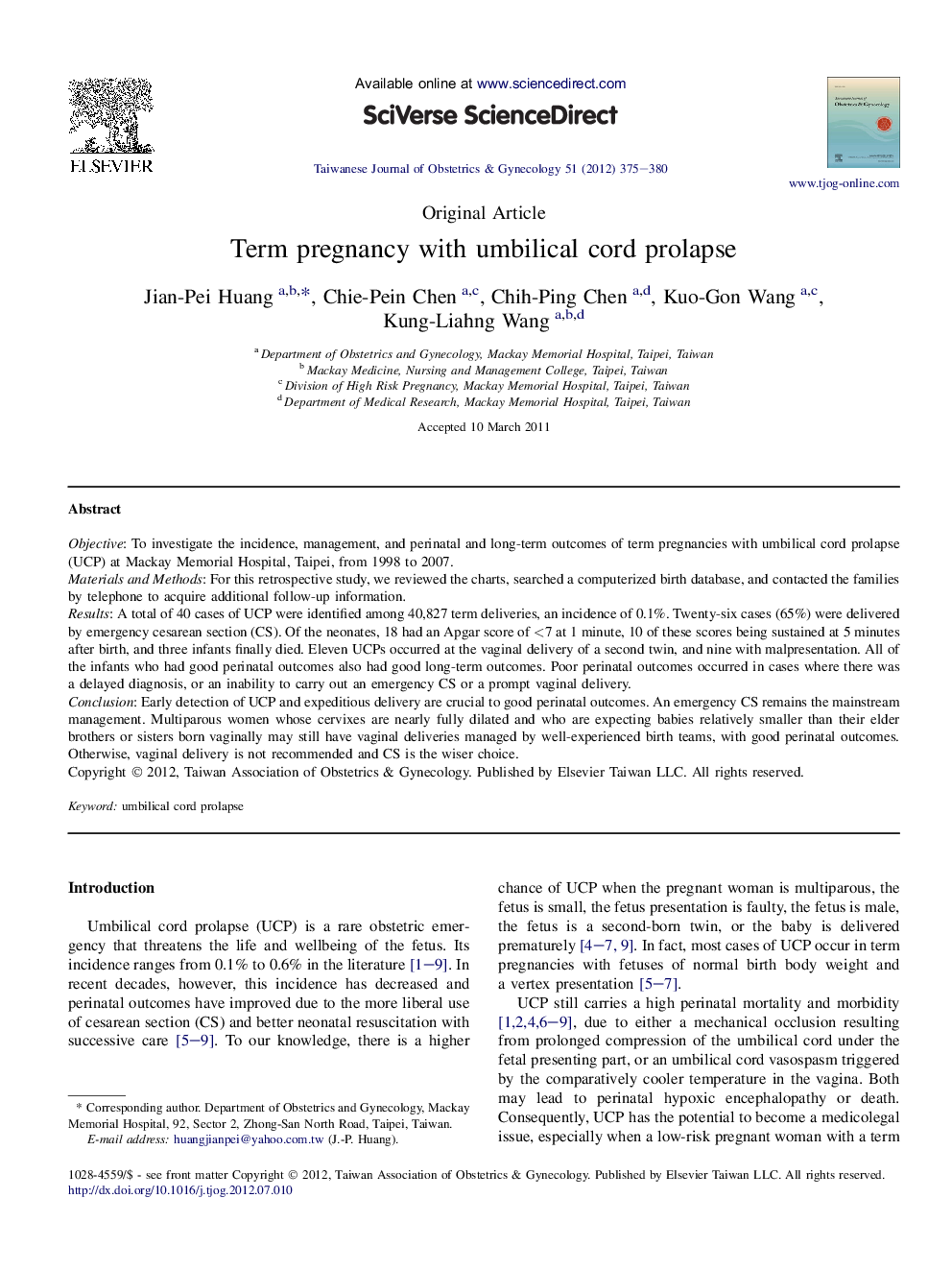| Article ID | Journal | Published Year | Pages | File Type |
|---|---|---|---|---|
| 3975682 | Taiwanese Journal of Obstetrics and Gynecology | 2012 | 6 Pages |
ObjectiveTo investigate the incidence, management, and perinatal and long-term outcomes of term pregnancies with umbilical cord prolapse (UCP) at Mackay Memorial Hospital, Taipei, from 1998 to 2007.Materials and MethodsFor this retrospective study, we reviewed the charts, searched a computerized birth database, and contacted the families by telephone to acquire additional follow-up information.ResultsA total of 40 cases of UCP were identified among 40,827 term deliveries, an incidence of 0.1%. Twenty-six cases (65%) were delivered by emergency cesarean section (CS). Of the neonates, 18 had an Apgar score of <7 at 1 minute, 10 of these scores being sustained at 5 minutes after birth, and three infants finally died. Eleven UCPs occurred at the vaginal delivery of a second twin, and nine with malpresentation. All of the infants who had good perinatal outcomes also had good long-term outcomes. Poor perinatal outcomes occurred in cases where there was a delayed diagnosis, or an inability to carry out an emergency CS or a prompt vaginal delivery.ConclusionEarly detection of UCP and expeditious delivery are crucial to good perinatal outcomes. An emergency CS remains the mainstream management. Multiparous women whose cervixes are nearly fully dilated and who are expecting babies relatively smaller than their elder brothers or sisters born vaginally may still have vaginal deliveries managed by well-experienced birth teams, with good perinatal outcomes. Otherwise, vaginal delivery is not recommended and CS is the wiser choice.
